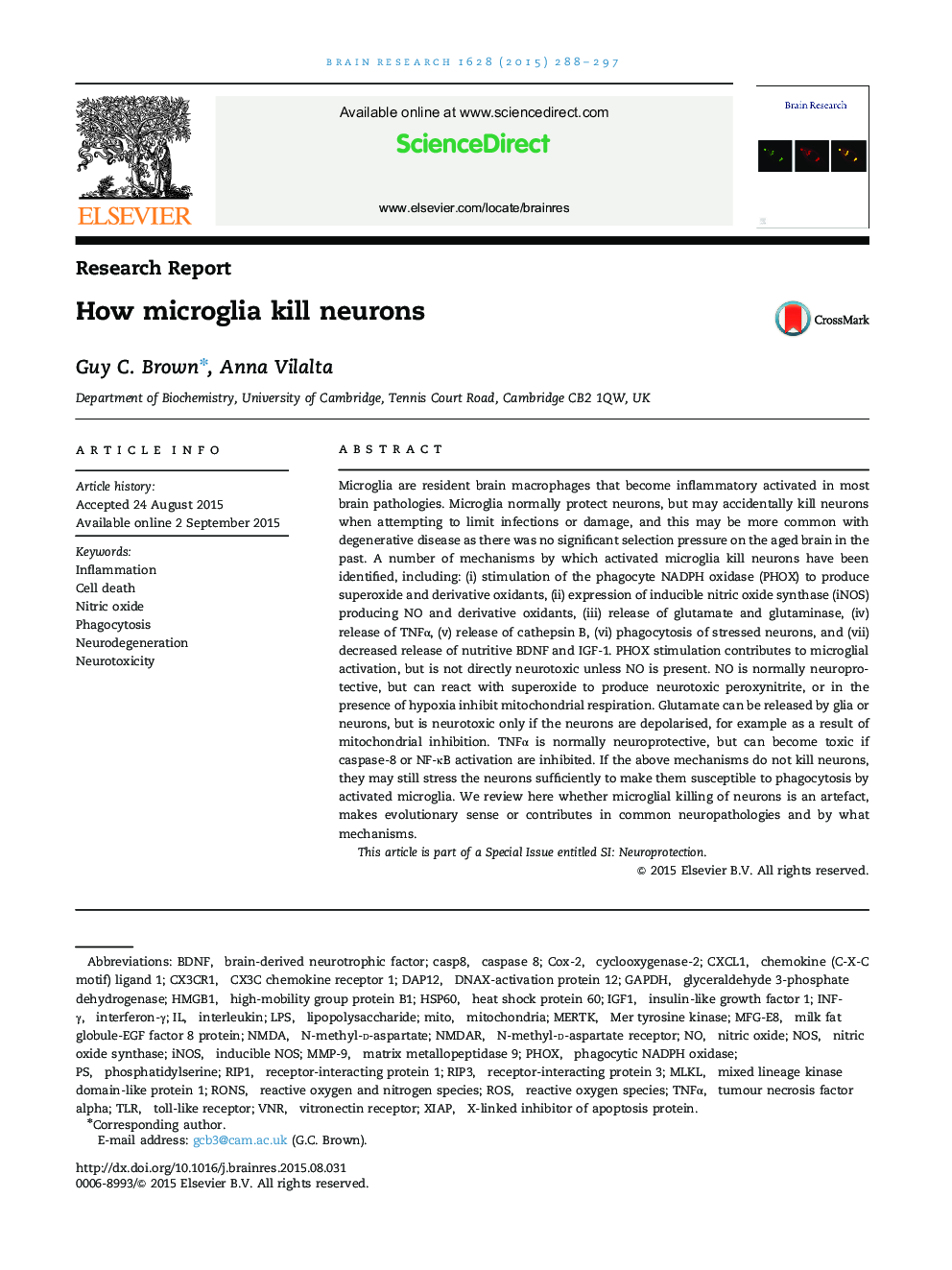| کد مقاله | کد نشریه | سال انتشار | مقاله انگلیسی | نسخه تمام متن |
|---|---|---|---|---|
| 6262665 | 1292373 | 2015 | 10 صفحه PDF | دانلود رایگان |
- Microglia are brain macrophages, activated by pathogens, damage or cytokines.
- Activated microglia kill neurons via TNFα, cathepsin B, glutamate, NO and oxidants.
- These agents may also protect neurons, and can only kill in specific circumstances.
- Stressed neurons can be killed by being phagocytosed by activated microglia.
Microglia are resident brain macrophages that become inflammatory activated in most brain pathologies. Microglia normally protect neurons, but may accidentally kill neurons when attempting to limit infections or damage, and this may be more common with degenerative disease as there was no significant selection pressure on the aged brain in the past. A number of mechanisms by which activated microglia kill neurons have been identified, including: (i) stimulation of the phagocyte NADPH oxidase (PHOX) to produce superoxide and derivative oxidants, (ii) expression of inducible nitric oxide synthase (iNOS) producing NO and derivative oxidants, (iii) release of glutamate and glutaminase, (iv) release of TNFα, (v) release of cathepsin B, (vi) phagocytosis of stressed neurons, and (vii) decreased release of nutritive BDNF and IGF-1. PHOX stimulation contributes to microglial activation, but is not directly neurotoxic unless NO is present. NO is normally neuroprotective, but can react with superoxide to produce neurotoxic peroxynitrite, or in the presence of hypoxia inhibit mitochondrial respiration. Glutamate can be released by glia or neurons, but is neurotoxic only if the neurons are depolarised, for example as a result of mitochondrial inhibition. TNFα is normally neuroprotective, but can become toxic if caspase-8 or NF-κB activation are inhibited. If the above mechanisms do not kill neurons, they may still stress the neurons sufficiently to make them susceptible to phagocytosis by activated microglia. We review here whether microglial killing of neurons is an artefact, makes evolutionary sense or contributes in common neuropathologies and by what mechanisms.This article is part of a Special Issue entitled SI: Neuroprotection.
Journal: Brain Research - Volume 1628, Part B, 2 December 2015, Pages 288-297
